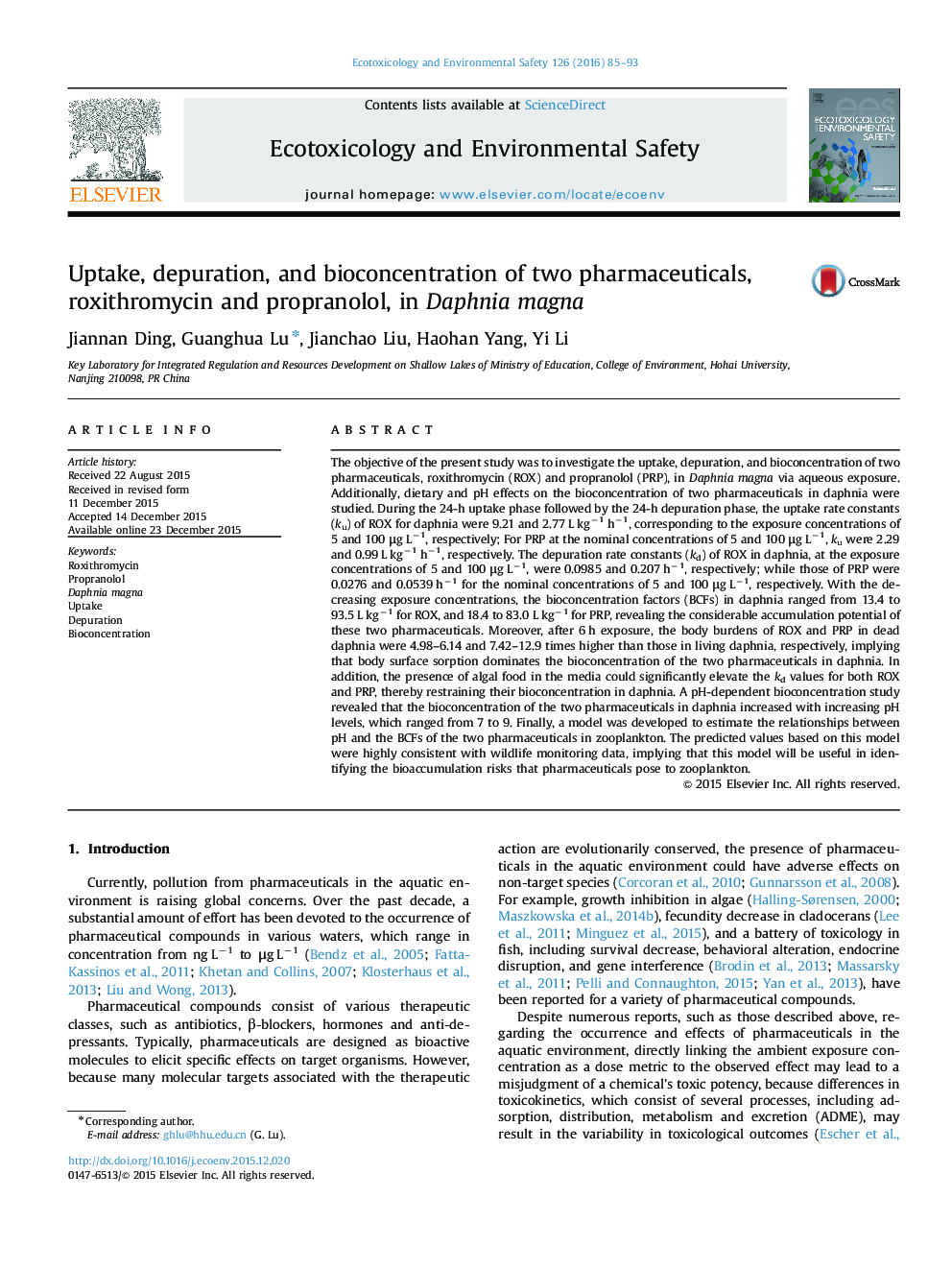| کد مقاله | کد نشریه | سال انتشار | مقاله انگلیسی | نسخه تمام متن |
|---|---|---|---|---|
| 4419221 | 1618937 | 2016 | 9 صفحه PDF | دانلود رایگان |

• Dynamics of uptake and depuration of ROX and PRP in Daphnia magna were studied.
• Body surface sorption dominated the accumulation of ROX and PRP in Daphnia magna.
• Food intake could elevate the depuration of ROX and PRP in Daphnia magna.
• A pH-dependent model was provided to estimate BCFs of ROX and PRP in zooplankton.
The objective of the present study was to investigate the uptake, depuration, and bioconcentration of two pharmaceuticals, roxithromycin (ROX) and propranolol (PRP), in Daphnia magna via aqueous exposure. Additionally, dietary and pH effects on the bioconcentration of two pharmaceuticals in daphnia were studied. During the 24-h uptake phase followed by the 24-h depuration phase, the uptake rate constants (ku) of ROX for daphnia were 9.21 and 2.77 L kg−1 h−1, corresponding to the exposure concentrations of 5 and 100 μg L−1, respectively; For PRP at the nominal concentrations of 5 and 100 μg L−1, ku were 2.29 and 0.99 L kg−1 h−1, respectively. The depuration rate constants (kd) of ROX in daphnia, at the exposure concentrations of 5 and 100 μg L−1, were 0.0985 and 0.207 h−1, respectively; while those of PRP were 0.0276 and 0.0539 h−1 for the nominal concentrations of 5 and 100 μg L−1, respectively. With the decreasing exposure concentrations, the bioconcentration factors (BCFs) in daphnia ranged from 13.4 to 93.5 L kg−1 for ROX, and 18.4 to 83.0 L kg−1 for PRP, revealing the considerable accumulation potential of these two pharmaceuticals. Moreover, after 6 h exposure, the body burdens of ROX and PRP in dead daphnia were 4.98–6.14 and 7.42–12.9 times higher than those in living daphnia, respectively, implying that body surface sorption dominates the bioconcentration of the two pharmaceuticals in daphnia. In addition, the presence of algal food in the media could significantly elevate the kd values for both ROX and PRP, thereby restraining their bioconcentration in daphnia. A pH-dependent bioconcentration study revealed that the bioconcentration of the two pharmaceuticals in daphnia increased with increasing pH levels, which ranged from 7 to 9. Finally, a model was developed to estimate the relationships between pH and the BCFs of the two pharmaceuticals in zooplankton. The predicted values based on this model were highly consistent with wildlife monitoring data, implying that this model will be useful in identifying the bioaccumulation risks that pharmaceuticals pose to zooplankton.
Journal: Ecotoxicology and Environmental Safety - Volume 126, April 2016, Pages 85–93